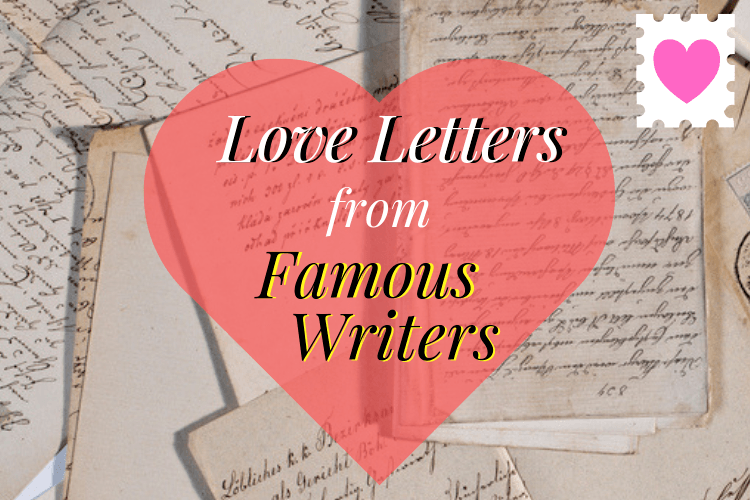
15 Love Letters from Famous Writers
How far would you go for love? Would you steal another man’s fiancée? Or spend five years wooing your soulmate only via pen and paper? What about spending two years in prison for expressing your love in a letter? For these 15 authors, romance was more important than their craft. In an age where some relationships were strictly confined to correspondence, these writers had no choice except to go postal. Keep reading to experience the same butterflies in your stomach that these literary lovers did over 50 years ago!
This post contains affiliate links. See our disclosure page for more information.
1. Victor Hugo

Source: Public Domain
The Romantic movement arrived late in France (about 40 years after it began elsewhere in Europe). But that didn’t stop a young Victor Marie Hugo from becoming one of the most prominent figures of this literary form. Romanticism found inspiration in the areas of imagination, emotion, and nature, all of which are reflected Hugo’s two most famous works, Les Misérables and The Hunchback of Notre Dame. Hugo was also a romantic in another sense: he enjoyed penning love letters to Adele Foucher, his childhood sweetheart and later wife. The two fell in love when they were just 17 years old.
Hugo’s mother, Sophie Trébuchet, originally opposed the match. But the couple’s devotion to each other outlasted Sophie’s objections. Hugo secretly proposed in 1820, but waited until after his mother’s death in 1821 to tie the knot. During their unapproved courtship, Hugo writes,
“Oh, Adele, do not mistake these words for blind enthusiasm—enthusiasm for you has lasted all my life, and increased day by day. My whole soul is yours. If my entire existence had not been yours, the harmony of my being would have been lost, and I must have died—died inevitably.”
Luckily, the couple was able to eventually marry, have children, and spend almost 50 years together, despite Hugo’s political exile and bouts of infidelity on both sides. Adele was truly the love of his life, as after her death, he had a series of mistresses, but could never bring himself to marry again.
2. Gustave Flaubert
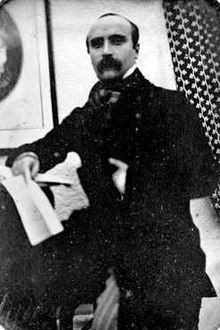
Source: Public Domain
The art of letter writing was especially important to Madame Bovary author Gustave Flaubert, as proven by the title of his second novel, Correspondence. One of the pioneers of the Realist movement, Flaubert’s impact on the French literary canon cannot be overstated. Coming on the heels of the Romantic movement, Realism aimed to eradicate anything fantastic and idealistic from their writing and replace it with what is factual and “true to life”. As much as Flaubert was opposed to the sentimental in his work, in life, he was a hopeless romantic.
Flaubert often wrote love letters to fellow poet Louise Colet, a French writer who frequented his salons. Some were quite steamy not just by Victorian-era standards, but even for today! In order to maintain some decorum, we’ve had to redact some of his letter. He writes,
“I will cover you with love when next I see you, with caresses, with ecstasy. I want to [redacted material], so that you faint and die. I want you to be amazed by me, and to confess to yourself that you had never even dreamed of such transports… When you are old, I want you to recall those few hours, I want your dry bones to quiver with joy when you think of them.”
Is it getting hot in here?
Despite this sultry and provocative prose, Louise could not be persuaded to leave her husband, the musician Hippolyte Colet. Flaubert then resolved never to marry, choosing prostitutes as bedfellows. This real-life heartbreak seeped into Flaubert’s fiction as well—perhaps that’s why Charles Bovary’s marriage to the apathetic Emma was doomed to fail! It seems that art reflects life.
3. Lewis Carroll
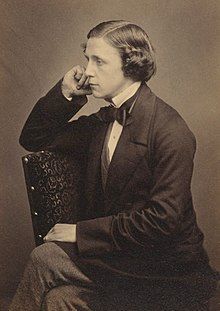
Source: Public Domain
Charles Lutwidge Dodgson (better recognized by his nom de plume Lewis Carroll) has a reputation for being an odd fish during his tenure at the University of Oxford. Despite being a highly sought-after professor of mathematics, he struggled with public speaking and human interaction. However, he was much more comfortable talking to children, which explains his foray into the world of children’s literature. His most famous work, Alice’s Adventures in Wonderland, reflects his quirky personality, and is based on his close relationships with the Liddell sisters, the daughters of the Dean of Christ Church, the head of the Oxford college Carroll was affiliated with.
Carroll’s love letters come across as rather peculiar as well, and definitely don’t convey the sentiment most associated with Valentine’s Day. When corresponding with Gertrude (of whom not much else is known) he writes,
“You will be sorry, and surprised, and puzzled, to hear what a queer illness I have had ever since you went. I sent for the doctor, and said, ‘Give me some medicine, for I’m tired.’ He said, ‘Nonsense and stuff! You don’t want medicine: go to bed!’”
How romantic!
Carroll goes on to recount a bizarre conversation between him and his doctor, begging for a cure for lovesickness. Who knows what happened when Gertrude read the letter? It certainly doesn’t convey a sense of tenderness and devotion like the previous authors on our list. We may never find out what Gertrude thought, but Carroll did cryptically include her name at the beginning of his poem “The Hunting of the Snark”.
4. Oscar Wilde
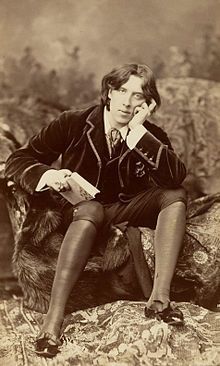
Source: Public Domain
Oscar Wilde’s love letters are infamously why he ended up incarcerated. Known for alluding to “Greek love” in his writing, the author of The Importance of Being Earnest and A Picture of Dorian Gray was one of the first homosexual authors in the public eye. After the mother of his object of affection, Lord Alfred Bruce Douglas, formally accused Wilde of “gross indecency with men,” Wilde brought her up on the charges of libel. He quickly dropped the accusations when the love letters he sent to Douglas (who was 16 years Wilde’s junior) surfaced. To add insult to injury, Wilde was actually married to a woman named Constance Lloyd at the time these accusations were made—and she was pregnant with his second child. Her pregnancy repulsed Wilde and helped convinced him to take ownership of his identity as a homosexual man. Romantic love between two men was a crime in late 19th century England, and he was sadly put on trial for expressing his true feelings. Before his arrest, he penned the following letter to Douglas:
My Own Boy,Your sonnet is quite lovely, and it is a marvel that those red-roseleaf lips of yours should be made no less for the madness of music and song than for the madness of kissing. Your slim gilt soul walks between passion and poetry. I know Hyacinthus, whom Apollo loved so madly, was you in Greek days. Why are you alone in London, and when do you go to Salisbury? Do go there to cool your hands in the grey twilight of Gothic things, and come here whenever you like. It is a lovely place and lacks only you; but go to Salisbury first.
Always, with undying love,Yours, Oscar
While this letter may seem tame by today’s cultural standards, it earned Wilde two years of hard labor in prison. Interestingly enough, Douglas was never prosecuted for his role in the relationship because of his social status. (Douglas was born into one of the noblest houses in Scotland.) During his time behind bars, Wilde wrote a 50,000 word letter to Douglas, but was not allowed to send it. After the playwright was released, he sailed to France, never to return to England again. He died two years later.
5. Leo Tolstoy
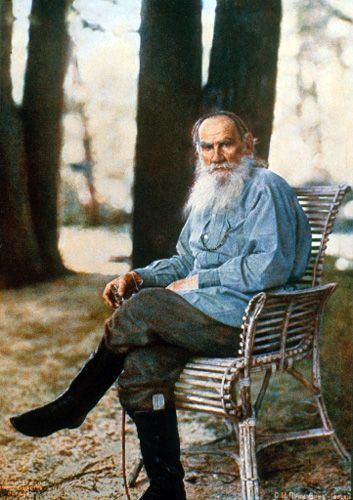
Source: Public Domain
19th century Russian nobleman Leo Tolstoy was known for his verbosity. His novels War and Peace, Anna Karenina, and The Brothers Karamazov are all over 500 pages long and regarded as the pinnacle of realist fiction. By contrast, his love letters are much more concise. One letter to his fiancée, Sophia, is only four lines long—but four astonishingly beautiful sentences at that!Tolstoy writes,
“I already love in you your beauty, but I am only beginning to love in you that which is eternal and ever precious—your heart, your soul. Beauty one could get to know and fall in love with in one hour and cease to love it as speedily; but the soul one must learn to know. Believe me, nothing on earth is given without labour, even love, the most beautiful and natural of feelings.”
His brevity must have worked, as the two were married for over 50 years, despite the fact that she was 16 years his junior. In an era when many marriages were done for convenience and social status, theirs was founded upon passion and romance. The two had 13 children together, three of which died in infancy. Sophia proved to be an enormous help to Tolstoy’s literary career, as she served as his editor and secretary. She even completed the painstaking task of copying his novels by hand, sometimes many times over. What an ideal match!
6. Jack London

Source: Public Domain
Jack London, American author of The Call of the Wild and White Fang, was one of the first writers ever to achieve celebrity status. Prioritizing making a profit over art, he primarily published his work in commercial magazines earning him a fortune. He strove to portray a pragmatic mindset in all aspects of life, from his career to his relationships. He once said that he didn’t believe in love! However, his dispassionate view of romance later cost him his marriage—he had an affair with a woman named Charmian, a fellow author.
In a letter he wrote to Charmian, London pens,
“Did I say that the human might be filed in categories? Well, and if I did, let me qualify—not all humans. You elude me. I cannot place you, cannot grasp you. I may boast that of nine out of ten, under given circumstances, I can forecast their action; that of nine out of ten, by their word or action, I may feel the pulse of their hearts. But of the tenth I despair. It is beyond me. You are that tenth.”
Even if he didn’t want to say the words “I love you,” it’s clear that London was infatuated with Charmian. He must have admitted it eventually, because the two were married in 1905, a year after divorcing his first wife. Their marriage lasted until her death in 1955.

Jack and Charmian at Waikiki in 1915. Source: Public Domain
7. Franz Kafka
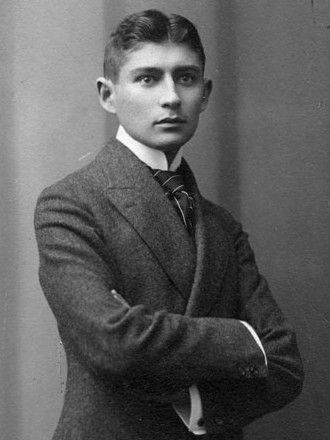
Source: Public Domain
Czech and Jewish author Franz Kafka is known for creating characters that endure rather bizarre afflictions, such as the narrator in The Metamorphosis, who wakes up one morning as a cockroach. One would expect that this surrealist pioneer would have a freakish love story to match. Nonetheless, his long distance romances was pretty run-of-the-mill. His torrid, 5-year love affair with lover Felice was conducted mostly via correspondence, complicating communication issues. In one letter, Kafka told her to stop sending so many letters because it physically pained him to read them every day, knowing he couldn’t actually see her.
Kafka writes,
“I answer one of your letters, then lie in bed in apparent calm, but my heart beats through my entire body and is conscious only of you. I belong to you; there is really no other way of expressing it, and that is not strong enough.”
Clearly Kafka was passionate about Felice, but unfortunately, like so many long-distance couples today, the two just couldn’t make things work. The old adage that distance makes the heart grow fonder doesn’t always hold true.
8. Edith Wharton

Source: Public Domain
Most famous for her masterpiece The House of Mirth and for being the first woman to win the Pulitzer Prize for Literature, American author Edith Wharton is one of the few female writers to make our list. This is because she was bold enough to record the passions of her heart with a pen and paper—and send them to her beloved. Despite being a woman born during the conservative Victorian age, she was still an “accomplished flirt,” at least in her letters to her husband. Her forwardness in a note written in 1908 demonstrates that she was a woman adapting to the rise of modernism, when females were allowed to express themselves more freely.
Wharton writes,
“There would have been the making of an accomplished flirt in me, because my lucidity shows me each move of the game—but that, in the same instant, a reaction of contempt makes me sweep all the counters off the board and cry out: – “Take them all – I don’t want to win – I want to lose everything to you!”
In the midst of an era where transparency of feelings was just coming into vogue, it’s clear the Whartons enjoyed a passionate marriage. The affluent couple appreciated traveling together, especially to Italy, and purchased houses in Newport, Land’s End, and on Park Avenue in New York City. Unfortunately, their globe-trotting ceased in 1900 when her husband’s acute depression became insurmountable. In 1913, they divorced, and Edith began a relationship with journalist Morton Fullerton, whom she regarded as an intellectual equal.
9. F. Scott and Zelda Fitzgerald
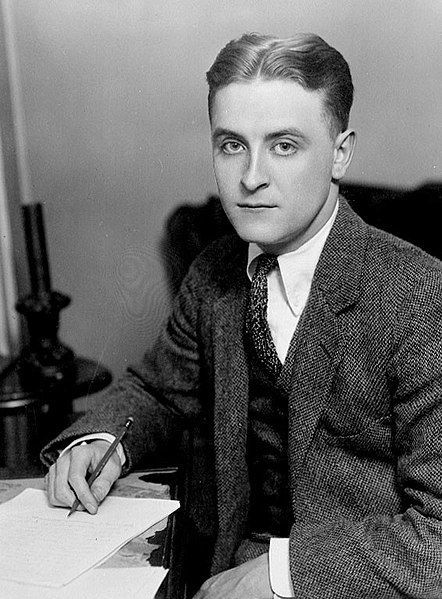
Source: Public Domain
The love story between Zelda and F. Scott Fitzgerald is a sore subject for devoted fans of the writer. While his best known work, The Great Gatsby, has been heralded as the Great American Novel, many (including fellow author Ernest Hemingway) blame F. Scott’s relationship with his wife, Zelda, for his failure to produce another masterpiece of the same caliber. (Perhaps Zelda was the Jazz Age’s Yoko Ono?)
What many don’t know, however, is that Zelda was a talented writer in her own right, as proven by the letters she sent to F. Scott. The correspondence between the two is a testament to their testy and torrid devotion to each other. Shortly before they were married, Zelda composed the following:
“How can you think deliberately of life without me—If you should die—O Darling—darling Scott—It’d be like going blind. I know I would, too,—I’d have no purpose in life—just a pretty—decoration. Don’t you think I was made for you? I feel like you had me ordered—and I was delivered to you—to be worn—I want you to wear me, like a watch—charm or a buttonhole bouquet—to the world. And then, when we’re alone, I want to help—to know that you can’t do anything without me.”
While it’s clear from the letter that the two loved each other deeply, F. Scott may have negatively impacted Zelda’s career just as much as she impeded his. Zelda suffered from schizophrenia, and so she spent many periods of their relationship in an institution. It was during one of these bouts that she completed her own novel, Save Me the Waltz. This semi-autobiographical work infuriated F. Scott, as he was using some of the same source material in Tender is the Night, which he had been working on for many years. He forced her to revise large portions of her work before it was published in 1934. Who knows what these two writers could have achieved if they had focused on the love expressed in their letters and stayed out of each other’s careers!
10. James Joyce
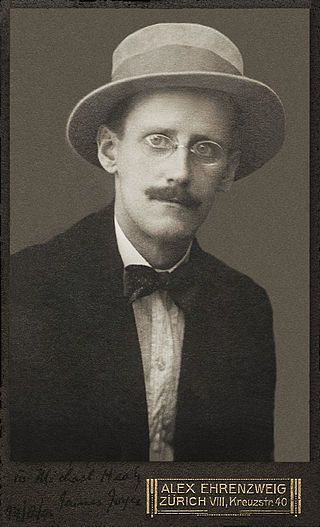
Source: Public Domain
James Joyce’s magnum opus, Ulysses, earned him the title as one of the most influential writers of the 20th century. What many don’t know about the modernist is that his relationship with his wife, Nora Barnacle, was of the utmost importance to him. While the stream of consciousness novel isn’t particularly romantic, it is covertly a love letter to his wife: the entirety of the novel is set on the day they met, June 16, 1904.
Joyce met Barnacle in Dublin on that all-important day while she was working as a chambermaid. Shortly after their meeting, he wrote to her,
“It has just struck me. I came in at half past eleven. Since then I have been sitting in an easy chair like a fool. I could do nothing. I hear nothing but your voice. I am like a fool hearing you call me ‘Dear.’ I offended two men today by leaving them coolly. I wanted to hear your voice, not theirs. When I am with you I leave aside my contemptuous, suspicious nature. I wish I felt your head on my shoulder.”
While Barnacle didn’t particularly like Ulysses (she never finished reading it), it didn’t mean that she loved him any less. The two enjoyed a long, happy marriage full of travel and adventure that lasted until Joyce’s death in 1941. The two are buried together in an honor grave in Zurich, where they spent much of their life.
11. Virginia Woolf
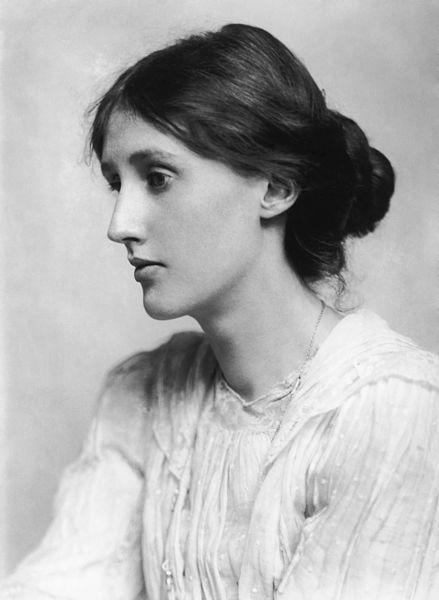
Source: Public Domain
Born only 9 days ahead of James Joyce, Virginia Woolf’s romantic life was as modern as the movement she contributed to. The author of Mrs Dalloway and To the Lighthouse was a prominent member of the famed Bloomsbury Group, a group of upper-class artists, writers, and intellectuals working in London in the 20th century. She and her friends established the tenets of the Modernist cause and expressed their revolutionary ideas both in writing and their day-to-day lives.
Though Virginia loved and married Leonard Woolf in 1912, the two were known for having an open relationship. She even explored a same-sex romance with fellow writer Vita Sackville-West. In 1927, Woolf writes,
“Look Here Vita—throw over your man, and we’ll go to Hampton Court and dine on the river together and walk in the garden in the moonlight and come home late and have a bottle of wine and get tipsy, and I’ll tell you all the things I have in my head, millions, myriads—They won’t stir by day, only by dark on the river. Think of that. Throw over your man, I say, and come.”
The women’s relationship existed outside of their correspondence. Throughout the late ‘20s and early ‘30s, the two explored a romantic and sexual connection. At the time, Sackville-West was the more famous writer of the two, and so she greatly contributed to building Woolf’s self esteem throughout their relationship. And yes, Leonard was aware of Virginia’s attraction to Vita, but he didn’t express any outward dissent. The Bloomsbury Group, with Virginia Woolf as their launching pad, pushed the boundaries of social norms in every aspect of their lives—with their love and their words.
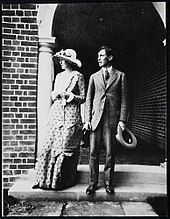
The Woolfs’ engagement photo. Source: Public Domain
12. Countee Cullen
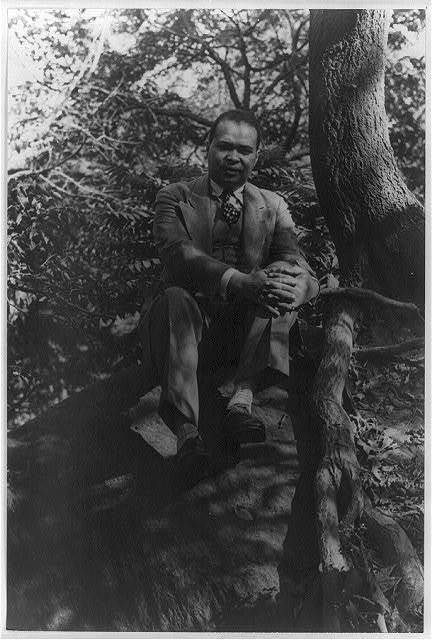
Source: Public Domain
A luminary of the Harlem Renaissance, Countee Cullen was a trailblazer not only for African-Americans but also for members of the LGBTQ community. He wrote and published a variety of poems about his homosexual relationships, but still remained officially closeted in order to conform with social conventions of the time. In fact, in 1928 he married a woman in order to cover up his true sexual identity: none other than Yolande Du Bois, daughter of the famed civil rights activist W.E.B. Du Bois. Both Cullen and Yolande had risen to preeminence and developed esteemed reputations by the time they were married: Cullen due to his writing and Du Bois due to her father’s connections. As such, their wedding was said to be Harlem’s social event of the century. However, the union soured within six months after Cullen tearfully confessed his same-sex attraction—rumor has it that he even engaged in a sexual relationship with his best man during the honeymoon.
The drama surrounding his confession didn’t make Cullen comfortable or eager to share his true feelings again, especially in writing. His most significant love letters were addressed to Alan Locke, who was lover to both Cullen and Langston Hughes at different points in his life. In the postscript of one letter, Cullen writes:
“Sentiments expressed here would be misconstrued by others, so this letter, once read, is best destroyed.”
Even if Cullen felt he couldn’t truly express himself during his own time, in published works or private correspondence, his bravery certainly paved the way for the poets who followed.
13. George Orwell
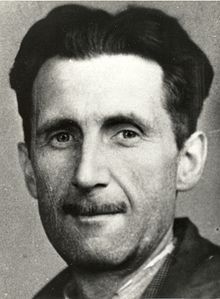
Source: Public Domain
George Orwell (a pseudonym for Eric Arthur Blair) is best known for his brilliant political commentaries disguised as novels, most notably Animal Farm and 1984. These works expose Orwell’s belief that governments can devolve into totalitarian regimes if not carefully put in check. However, it is his love letters that are lauded as some of the most revealing documents to exist about him—they divulge that he was a man in love with love. Addressed to Miss Jacques, a friend who was otherwise engaged at the time, the letters portray Orwell as a desperate man infatuated with a woman out of his reach.
She returned his affections (in writing) for a while, but then soon married her fiancé, leaving Orwell dejected and alone. Post-rejection, Orwell writes,
“When we were together, you didn’t say whether you were going to let me be your lover again. Of course you can’t if Dennis is in S’wold, but otherwise? You mustn’t if you don’t want to, but I hope you will.”
Even though she had already made her choice by marrying Dennis, Orwell still clung to hope that she would come back to him, for a while. Luckily, he was eventually able to move on, and married Eileen O’Shaughnessy in 1936, a union that lasted until her death in 1945. Still a hopeless romantic, Orwell knew he could not survive without a wife for long, and so he proposed marriage to four women after her death. Luckily, Sonia Brownell accepted, and so she became mother to Orwell’s adopted son when he passed away in 1950.
14. Ernest Hemingway

Ernest and Mary Hemingway on a safari. Source: Public Domain
Ernest Hemingway’s love life was notoriously messy. Hemingway is most famous for penning works like The Sun Also Rises and A Farewell to Arms, but his womanizing reputation and three divorces added to his celebrity status. It’s no wonder most of his fictional romances ended unhappily! Despite his tumultuous track record, there’s no doubt that Hemingway truly loved the women in his life, and he aptly expressed it in his love letters.
In a letter to Mary Walsh, who became his fourth wife, Hemingway writes,
“Please write me Pickle. If it were a job you had to do you’d do it. It’s tough as hell without you and I’m doing it straight but I miss you so [I] could die. If anything happened to you I’d die the way an animal will die in the Zoo if something happens to his mate. Much love my dearest Mary and know I’m not impatient. I’m just desperate.”
Pickle is a rather odd term of endearment, but we’ll cut the literary genius some slack for that one. Their relationship was full of adventure, as the two traveled to places like Cuba, Venice, The Congo, and Paris together. Some of his best work was penned during this relationship, including the Pulitzer-winning The Old Man and the Sea. Mary was the last great love of his life, as she became his widow in 1961.
Read about Hemingway’s love of writing instruments in our post, 18 Famous Authors and Their Fountain Pens .
15. J.R.R. Tolkien
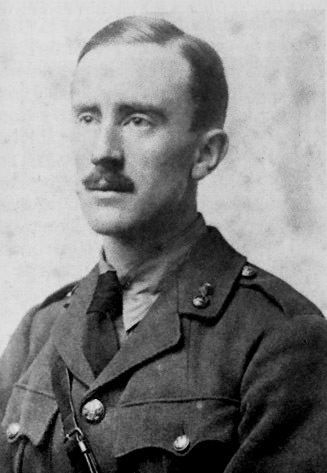
Source: Public Domain
Not many writers can boast that they created an entire universe, but J.R.R. Tolkien can. The author spent the greater part of his life creating the world of The Lord of the Rings, devising maps, histories, and even languages for Middle Earth. The result was a saga that enchanted audiences for the past 50 years. Clearly, Tolkien was devoted to creating the series. However, his greater devotion was to his wife, Edith.
Tolkien actually proposed to his wife via a love letter. After waiting three years without writing or speaking to her while he was attending the University of Oxford (for the sake of his grades and propriety), Tolkien finally wrote to his love and asked for her hand. Unfortunately, Edith was already engaged, which devastated the young philologist. She believed that he no longer cared for her, which couldn’t have been further from the truth.
Luckily, Tolkien’s letter caused her to reconsider her current engagement, and soon the two were happily betrothed. The Tolkiens loved each other deeply for the remainder of their lives. Their gravestone is inscribed with the names “Beren” and “Lúthien,” the two romantically involved characters in his Lord of the Rings universe. If you’d like to see some of their love letters in person, they’ll be on display at the Morgan Library in New York City through May 2019.
P.S. – Sending Your Love
Love letters can be difficult to write no matter the circumstances. These 15 authors had a variety of approaches to corresponding with their beloveds. However, they all conveyed the same message of adoration. As you take note from the prose of the pros, enhance your love letter with some elegant stationery and a posh fountain pen. Take comfort in the fact that your correspondence probably won’t be circulating the internet in 50 years for all of your fans to read—unless you become a best-selling author, that is.
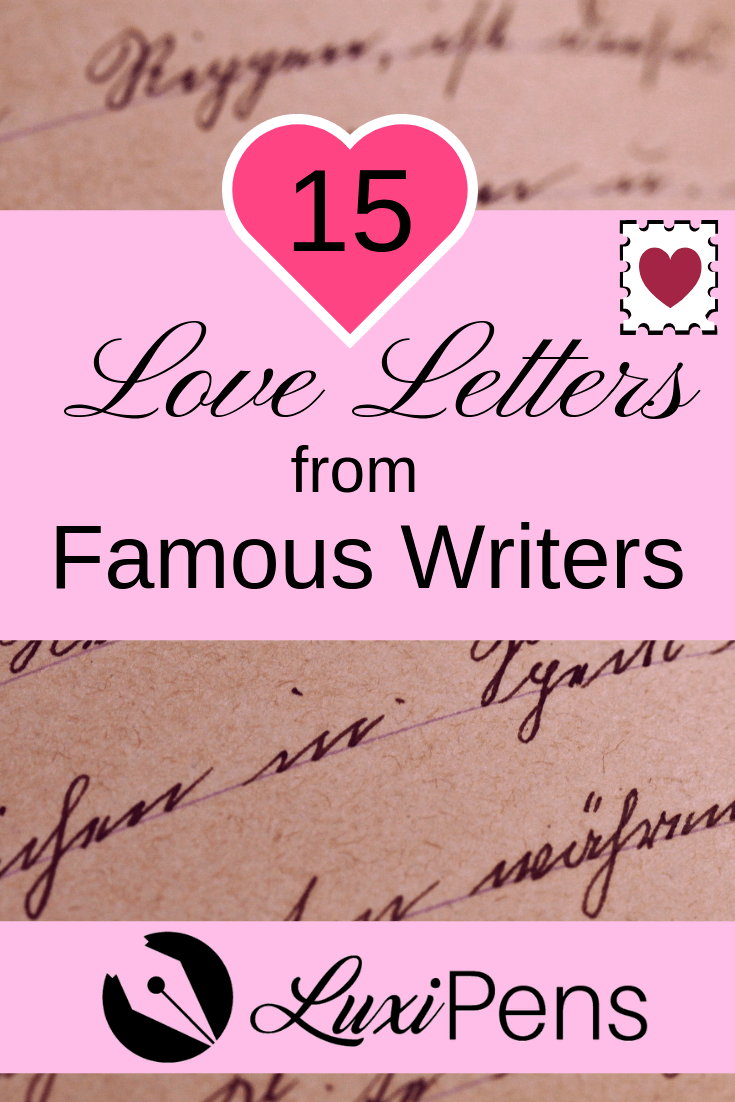
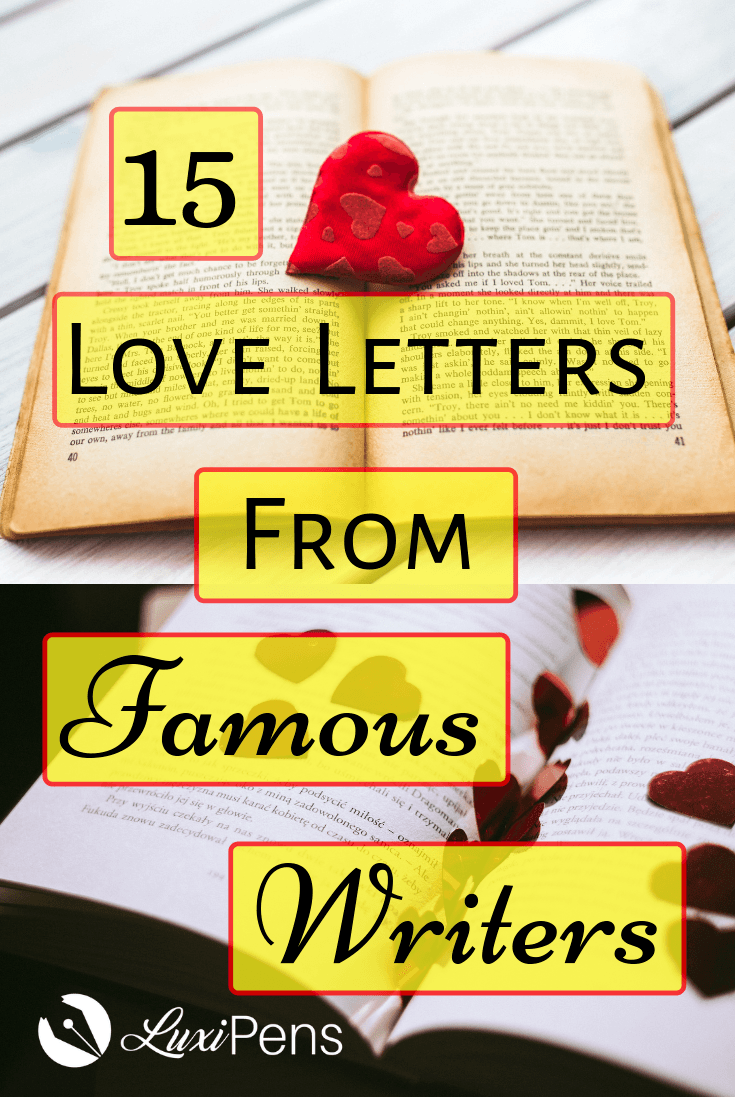
Sources
“Countee Cullen.” Wikipedia. 08 Feb. 2019. Wikimedia Foundation. 14 Feb. 2019 <https://en.wikipedia.org/wiki/Countee_Cullen>.
“Edith Wharton.” Wikipedia. 23 Jan. 2019. Wikimedia Foundation. 12 Feb. 2019 <https://en.wikipedia.org/wiki/Edith_Wharton>.
Elizabeth, Prapti. “15 Steamy Love Letters By Famous Authors That Are Better Than Sexting In Today’s Age.” ScoopWhoop. ScoopWhoop. 14 Feb. 2019 <https://www.scoopwhoop.com/15-Steamy-Love-Letters-By-Famous-Authors-That-Are-Better-Than-Sexting-In-Todays-Age/>.
Ernest Hemingway.” Wikipedia. 05 Feb. 2019. Wikimedia Foundation. 14 Feb. 2019 <https://en.wikipedia.org/wiki/Ernest_Hemingway>
“F. Scott Fitzgerald.” Wikipedia. 12 Feb. 2019. Wikimedia Foundation. 14 Feb. 2019 <https://en.wikipedia.org/wiki/F._Scott_Fitzgerald>.
“Franz Kafka.” Wikipedia. 06 Feb. 2019. Wikimedia Foundation. 12 Feb. 2019 <https://en.wikipedia.org/wiki/Franz_Kafka>.
“Gustave Flaubert.” Wikipedia. 08 Feb. 2019. Wikimedia Foundation. 12 Feb. 2019 <https://en.wikipedia.org/wiki/Gustave_Flaubert>.
“Huge Collection of Famous Celebrity Romantic Love Letters.” TheRomantic.com. 11 Feb. 2019 <http://theromantic.com/LoveLetters/main.htm>.
“J. R. R. Tolkien.” Wikipedia. 01 Feb. 2019. Wikimedia Foundation. 14 Feb. 2019 <https://en.wikipedia.org/wiki/J._R._R._Tolkien>.
“Jack London.” Wikipedia. 26 Jan. 2019. Wikimedia Foundation. 12 Feb. 2019 <https://en.wikipedia.org/wiki/Jack_London>.
“James Joyce.” Wikipedia. 01 Feb. 2019. Wikimedia Foundation. 12 Feb. 2019 <https://en.wikipedia.org/wiki/James_Joyce#Death>.
“James Joyce.” Wikipedia. 01 Feb. 2019. Wikimedia Foundation. 14 Feb. 2019 <https://en.wikipedia.org/wiki/James_Joyce>.
“Leo Tolstoy.” Wikipedia. 04 Feb. 2019. Wikimedia Foundation. 12 Feb. 2019 <https://en.wikipedia.org/wiki/Leo_Tolstoy>.
“Lewis Carroll.” Wikipedia. 24 Jan. 2019. Wikimedia Foundation. 12 Feb. 2019 <https://en.wikipedia.org/wiki/Lewis_Carroll>.
“Realism – Examples and Definition of Realism.” Literary Devices. 29 Dec. 2016. Literary Devices. 11 Feb. 2019 <https://literarydevices.net/realism/>.
Temple, Emily. “The Torrid Love Letters of Famous Authors.” The Atlantic. 17 July 2013. Atlantic Media Company. 14 Feb. 2019 <https://www.theatlantic.com/entertainment/archive/2012/02/the-torrid-love-letters-of-famous-authors/253089/>.
“Virginia Woolf.” Wikipedia. 05 Feb. 2019. Wikimedia Foundation. 12 Feb. 2019 <https://en.wikipedia.org/wiki/Virginia_Woolf>.
“Zelda Fitzgerald.” Wikipedia. 04 Feb. 2019. Wikimedia Foundation. 14 Feb. 2019 <https://en.wikipedia.org/wiki/Zelda_Fitzgerald>.

